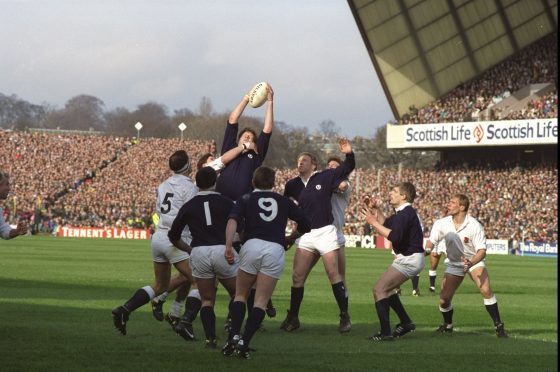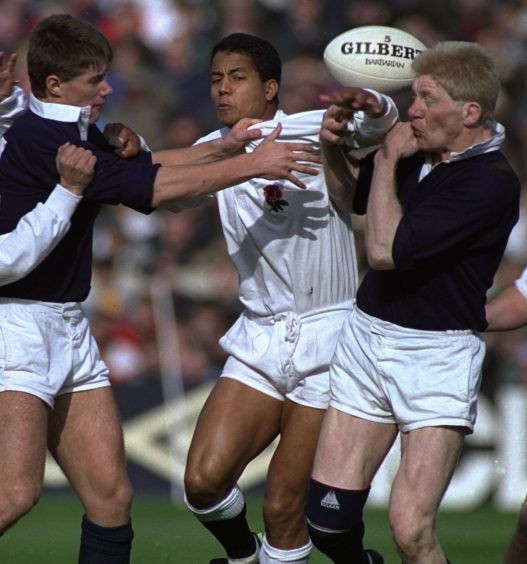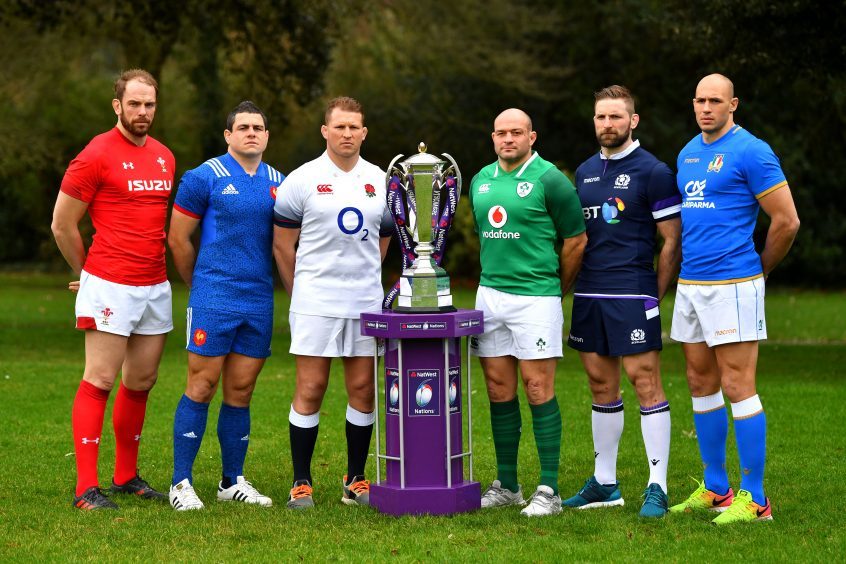Scottish rugby hasn’t been overburdened with optimism in recent years.
But occasionally, the stars align and the fates conspire to create a situation where oval-ball aficionados among God’s frozen people are rewarded for their fortitude and faith.
That was certainly the case back in 1990 when the former Five Nations Championship produced the sort of heart-rending conclusion which has become the stuff of legend.
In one corner, England, captained by Will Carling, a man who seemed hyper-confident in his own abilities, produced scintillating rugby throughout the first three tussles of the tournament and their supporters – and the media – gushed they were invincible.
They trounced Ireland 29-0 at Twickenham, thrashed the French 26-7 in Paris and swatted aside Wales 34-6 at the Arms Park with a swagger and a ruthlessness which persuaded one journalist to write: “You could put black jerseys on them and New Zealand would bow in acclaim”.
They had scored 80 points – including 11 tries – in three matches and the bookies stopped taking odds on them winning the Grand Slam. All they had to do was beat the Scots in Edinburgh on March 17 and their magical mystery tour would be rewarded.
Scotland, in contrast, were still unbeaten, but they had displayed little of the same flair. On their travels, they edged past Ireland 13-10 with two tries from Derek White and beat the Welsh 13-9 in a visceral war of attrition in Cardiff.
Indeed, although their 21-0 victory over France sounded extremely convincing, Ian McGeechan and Jim Telfer’s personnel were struggling until Alain Carminati got himself sent off with an act of Gallic bampottery, which saw the flanker banned for 30 weeks.
On paper, at least, it seemed close to mission impossible for David Sole and his confreres.
But, of course, rugby isn’t played on paper and, for those of who were living and working in Edinburgh during that period, the excitement and anticipation grew as the big showdown loomed.
In bars and hostelries around Rose Street and on the Royal Mile, tickets changed hands for up to £500. This was in the Dark Ages before email or Twitter, when supporters advertised for these items in newspapers, but the demand was overwhelming.
The week before the contest, I interviewed Sole at his work – rugby was still an amateur pursuit, at least in the Northern Hemisphere – and he was impressively averse to making any grand predictions. He recognised the challenge would be massive, but his eyes gleamed as he envisaged it.
And, as that mad March morning arrived, there was a sense of something special in the air on the walk along to the stadium.
Gary Armstrong, a giant presence in a leprechaun’s guise, was among those who supped in the incredible atmosphere, the spontaneous renditions of “Flower of Scotland” and “Scotland the Brave.”
Some of the T-shirt vendors were flogging items with “England Grand Slam Winners 1990” even before a ball had been kicked. But the home stars – the Hastings brothers, Gavin and Scott, Craig Chalmers, John Jeffrey, Finlay Calder and Sole – used this to their advantage.
Minutes before the kick-off, they marched out on to the pitch like gladiators, slow, brooding and menacing, even as the crowd unleashed a cauldron of noise. I turned round and looked at the late, great Bill McLaren: he looked as if he was teaching a class of kids in Hawick.
And then the first wave of Scottish attacks saw the SRU’s finest eke out a 3-0 lead, then a 6-0 advantage with two penalties from Chalmers.
Nobody was taking anything for granted, not against this band of sweet charioteers, but perhaps the visitors had started to believe their own hype. True, they cut the deficit with a fine try from Jeremy Guscott, but they seemed surprised by the sheer ferocity of the resistance in front of them.
At the interval, it was 6-4 and many of the fans sought out beer, whisky, pipes, cigarettes and anything else which might soothe the nerves.
But, almost immediately upon the resumption, they were hollering their backing as Gavin Hastings broke free, kicked the ball ahead while being tackled and Tony Stanger scored the try which gave the Scots some daylight.
I’ve been in plenty of daunting auditoriums since then – including the 1995 Rugby World Cup final in South Africa and the 2000 Olympics in Sydney – but I’ve never heard anything more raucous or evangelical than in that corner of Edinburgh.
And, although the English kept charging at Sole and Calder and Jeffrey, they had no answers. In the end, they weren’t All Blacks, but they were definitely all black and blue.
And the whole giddy experience has given me three tips for the Scots as they seek another Grand Slam in the coming weeks.
Firstly, don’t worry too much about champagne rugby on the road. Wins are the only currency which count. Sole and his troops appreciated that it didn’t matter whether the winning margin was two points or 20.
Secondly, let’s talk up the English and acknowledge how brilliant and all-conquering they are. (And yes, their recent record is superb). Scots, historically, have always been better at arranging an ambush than an invasion.
And lastly, accept there will be difficulties on the journey and matches which are balanced on a knife-edge. Coming out on top in these positions is what distinguishes the best.
Over to you, Gregor Townsend!


